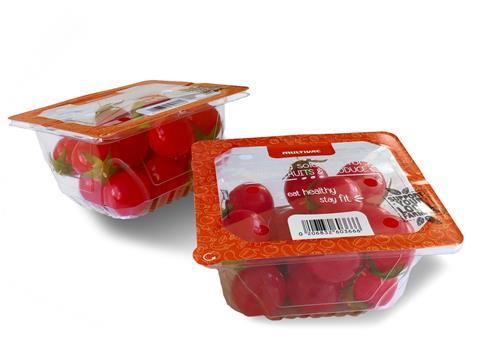
MULTIVAC Marketing & Inspection has launched Top Wrap and Top Close – its new solutions for reducing plastic in the sealing and labelling of fruit and vegetables.
While its new innovations seek to minimise the amount of plastic used in its labelling process, the company maintains the importance of plastic packaging in extending a product’s shelf life, preventing resultant food waste, and, it claims, maintaining a carbon footprint thirty times less than that of a processed food product.
Top Wrap applies a label to the top and only two sides of a tray, reducing the overall amount of packaging. This can be made of polypropylene (PP), allowing consumers to view the product without removing any packaging or making a purchase.
Michael Reffke, product manager for Labelling Technology at MULTIVAC, points out that the amount of plastic used will vary between labels, but claims that the plastic content will always be below 10%. He adds, “Thanks to a combination of cardboard trays and standard self-adhesive labels made of paper or renewable materials, this produces a pack that can be sorted perfectly into its separate components for recycling.”
On the other hand, Top Close is applied only to the top of a tray, with adhesive only applied to its edges to prevent contact with the product. MULTIVAC claims that a conveyer belt labeller with Top Close programming can reach an output of up to 200 products per minute; trays can be fed in manually or transferred automatically via an upstream module. Reportedly, this solution cuts down costs and increases efficiency in the packaging process.
The company’s labellers, such as the L 310 FW or the L 312 FW with weigh price marking, are easily integrated into existing production lines or can stand alone with manual product infeed.
This launch comes after the reveal of MULTIVAC’s new R3 thermoforming machine last month, aimed at producing recyclable, attractive and adaptable mono-material films.
Back in June, it unveiled its W 500 flowpackaging solution, which is said to quickly and sustainably package food in pillow packs.












No comments yet